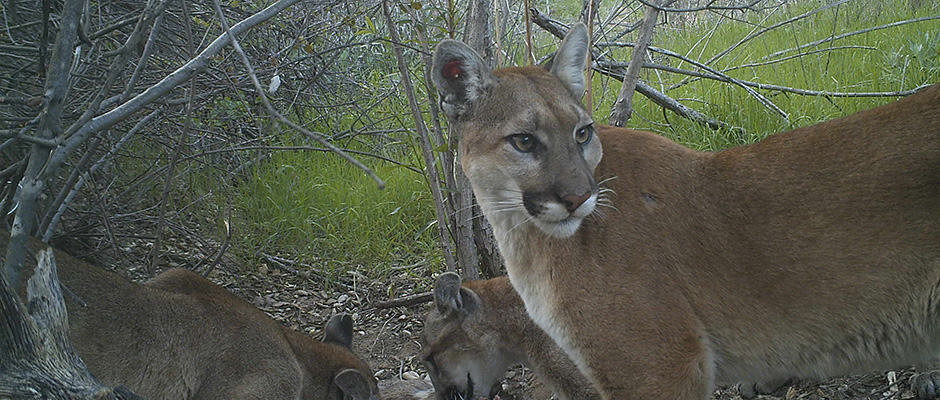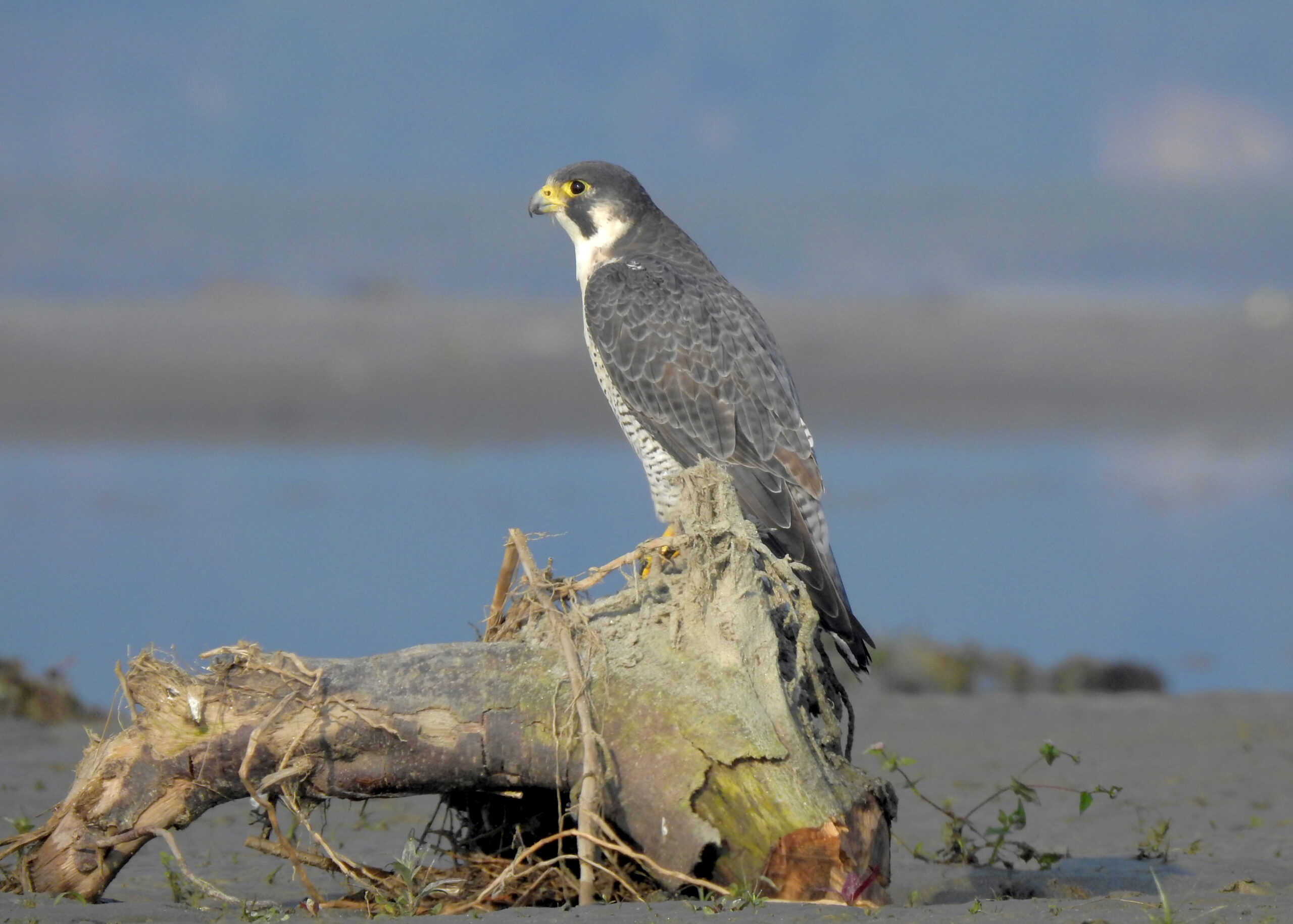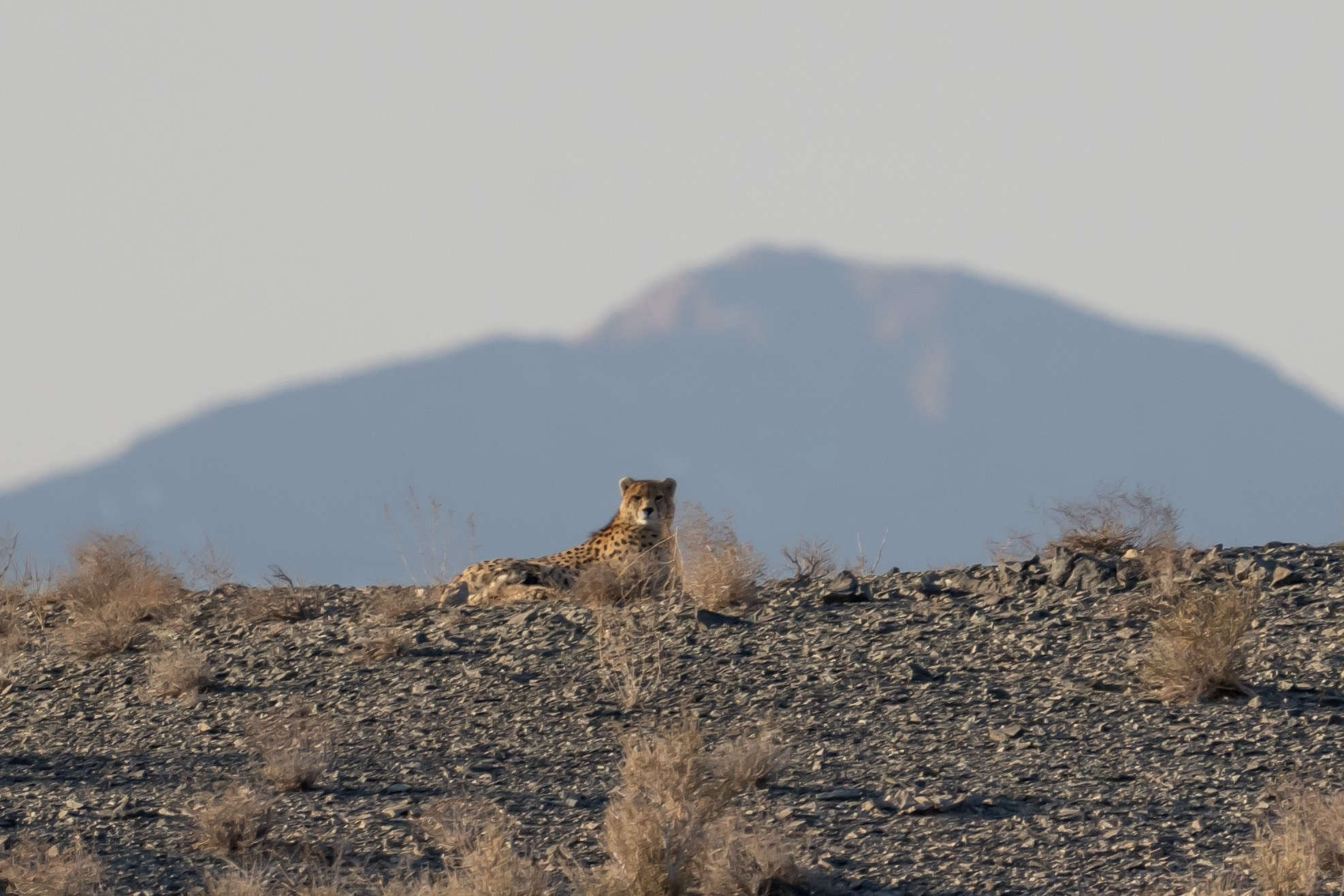Share this article
Habitat Fragmentation Leads to Mountain Lion Deaths
Only one mountain lion has been known to successfully make it across California’s Interstate 15 from the east side to the west since 2001. The sole male animal, known as M86, may have been the genetic savior for the entire population in the Santa Ana Mountains, at least for now.
According to a study published recently in PLOS ONE, human-related incidents account for more than half of mountain lion (Puma concolor) deaths in the study’s range in southern California. The overall annual survival rate for this population of mountain lions — also known as cougars or pumas — was abnormally low at about 56 percent, despite being considered “specially protected” in the state. In fact, most states that allow recreational hunting of the animals have higher survival rates than the ones observed in the study, according to lead author and TWS member T. Winston Vickers.
The thirteen-year study began as a way to measure the impacts of mountain lions on the endangered peninsular bighorn sheep (Ovis canadensis nelsoni). Over time, the researchers became increasingly concerned with some of the trends they were noticing, so they began to analyze both demographic genetics and survival rates of mountain lions in the Peninsular Mountain Ranges and Santa Anas, a subset of the Peninsulars.
“Our data started suggesting, part way through the study, that the mortality rates or the survival rates were probably lower than we would’ve expected,” said Vickers, an associate veterinarian for the Wildlife Health Center at University of California, Davis. Also alarming, he says, was the fact that most of the deaths were caused by humans. Data gathered during the study proved that in this region, vehicle collisions are the leading cause of death for mountain lions, followed by deaths secondary to depredation permits. Other causes of death included human-induced wildfires, illegal shootings and public safety removals. “We would’ve expected some human induced mortality…but we were surprised to see the vehicle mortalities be so high and even higher than the depredation permits.”
When examined closely, the low survival rates and increasing human-mountain lion conflict can be traced back to one underlying cause: habitat fragmentation.
Habitat fragmentation, as defined by eLS, is “the process by which habitat loss results in the division of large, continuous habitats into smaller more isolated remnants.” Southern California, Vickers explains, has developed in a somewhat sprawling way, leaving finger-like protrusions in the landscape. The primary fragmenting factors for mountain lions in this area are agricultural, human housing development and especially road and highway infrastructure.
Camera traps set up at known or potential highway crossings and telemetry data revealed that it is nearly impossible for mountain lions to cross I-15, essentially cutting off the small Santa Ana population from the rest of the Peninsular Ranges. In busy, high-traffic areas, wildlife passageways are few and far between, and even where there are passageways, animals tend to turn away without crossing. Studies of other animals suggest that wildlife may be affected by sensory factors such as light and sound. Although this is not confirmed in mountain lions, researchers are attempting to learn more about those factors. Lower traffic areas may be more accessible, but could also be far riskier as animals misjudge fast-moving vehicles and end up getting hit.
Had it not been for M86, the gene pool in the Santa Anas might have deteriorated to the point of no return. M86 produced several offspring, one of which, a female, is still alive and now has two offspring of her own. Although one animal may not seem like a lot, his impact can be significant. A similar story about a male mountain lion crossing U.S. Route 101 in the Santa Monica Mountains showed that one animal can make a noticeable difference in the genetic makeup of a small population. Ironically, M86 is believed to have been killed in a vehicle collision.
Vickers says that there are ongoing efforts to create and preserve undeveloped corridors connecting larger habitat areas. Connectivity and natural translocation are the preferred method of mountain lion conservation in southern California, of course, but relocation of genetically unique animals into the population is also being looked at. Relocation was successful for the critically endangered Florida panther when the U.S. Fish and Wildlife Service brought in eight cougars from Texas to spread new genes through the population. Fencing around highways is another strategy that California has adopted from Florida.
“The lesson is look decades down the road…” Vickers said. “There are a lot of efforts still to build and secure more corridors and more land. But the challenges are significant once the land is broken up into smaller parcels.”
Header Image:
Female cougar F92 keeps watch as her two kittens eat in the Santa Ana Mountains. The sprawling human population in southern California has created habitat fragmentation in the region, causing many problems for mountain lions. A recent study published in PLOS ONE found that it is nearly impossible for mountain lions to cross major highways and collisions with vehicles are the number one cause of death for the animals.
Image Credit: Winston Vickers








